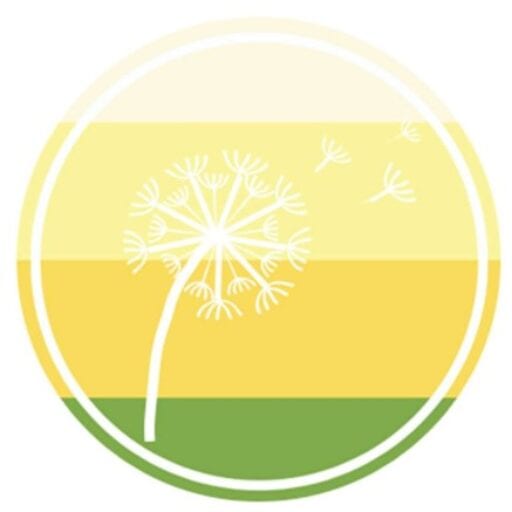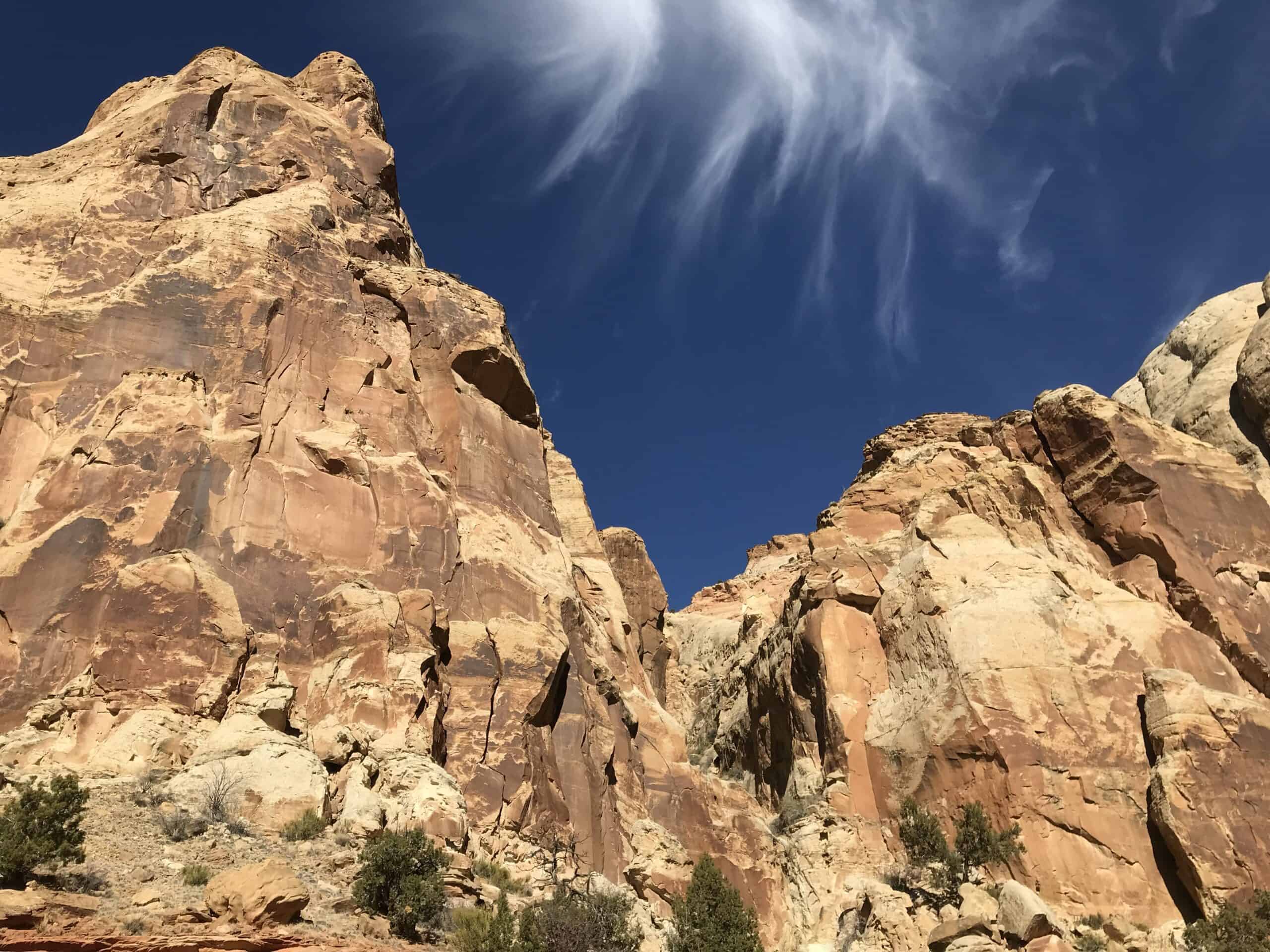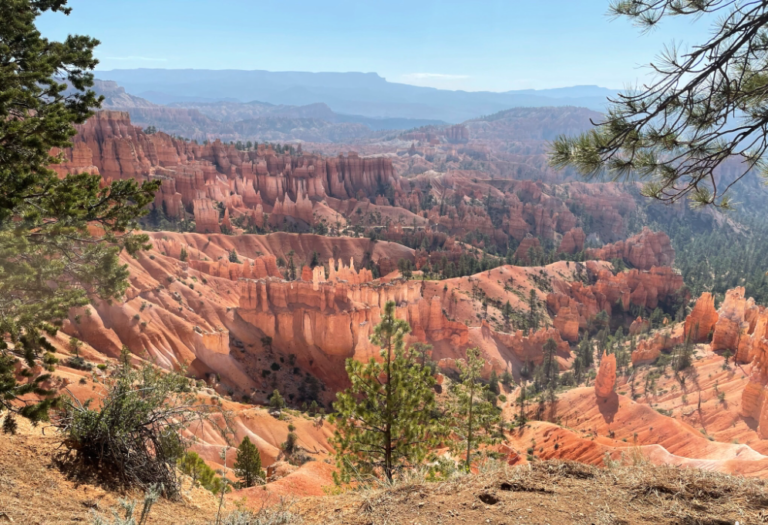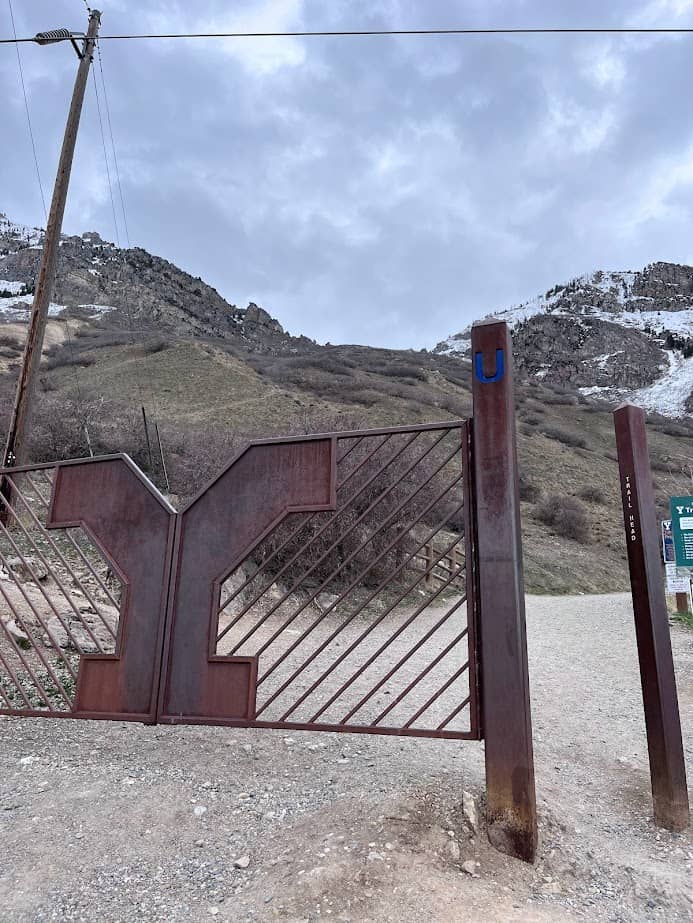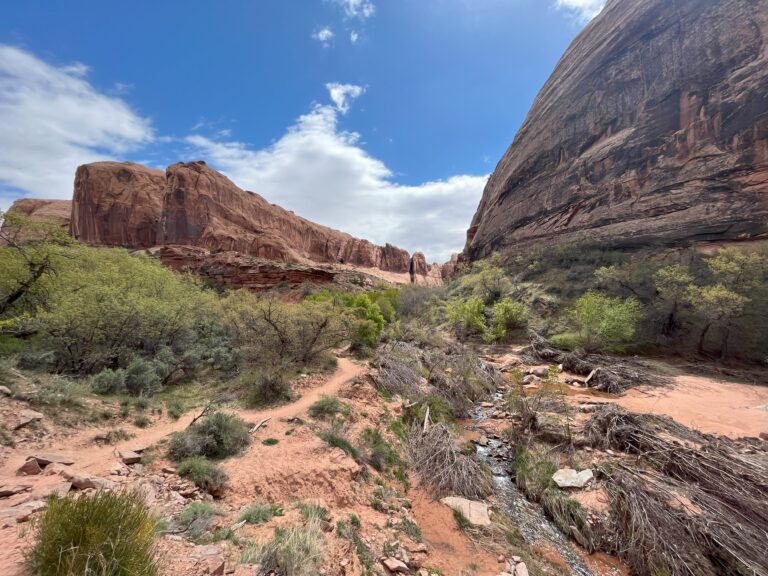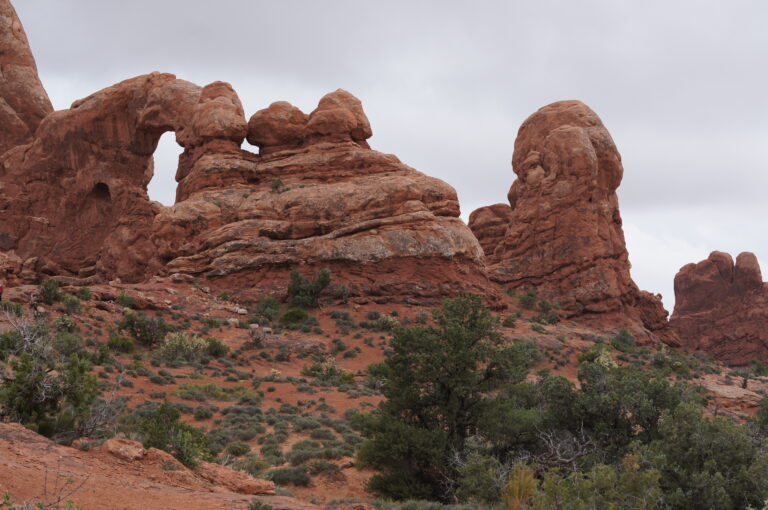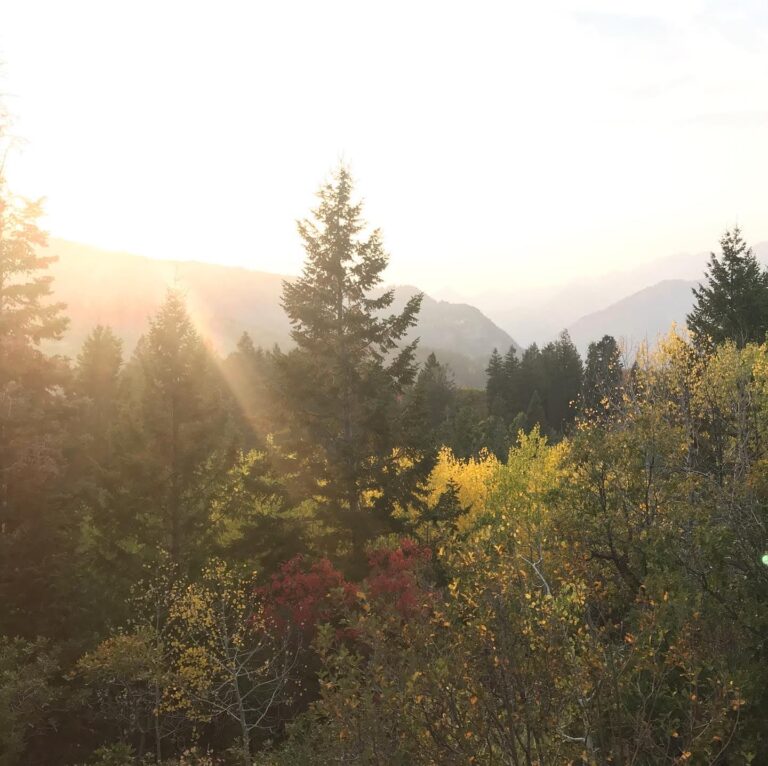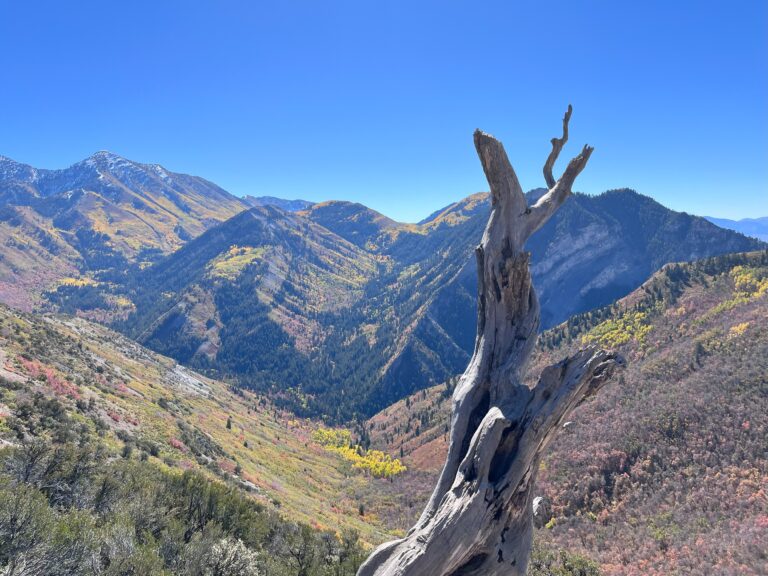Utah National Parks: Which is the Best?
Last Updated on February 20, 2024 by Kathryn
Discover the BEST Utah National Park for you and your family! Find stunning views, great hikes, and more. Plan your adventure Today.
Red rock, blue skies, and dry desert air are simply good for the soul.
After spending my childhood frequently camping in the desert in Utah’s national parks, the otherworldly landscapes feel like home to me.
If you’ve never visited any of them, picking which Utah national park is the best is quite a task!
While sharing similarities, each of Utah’s Mighty 5 boasts unique features.
They all shine in some way, and determining which one is best depends on what you’re looking for.
If you want stunning views and great hikes, you really can’t go wrong with any of them. If you’re looking for something specific, I’ll dig deep into each to help you have the best visit to the Utah national park of your choice.
After visiting each park many times, I’ve picked something that stands out to me for each.
This post may contain affiliate links, which means I’ll receive a commission if you purchase through my links, at no extra cost to you. Please read full disclosure for more information.
Arches National Park – BEST ROCK FORMATIONS
Bryce Canyon National Park – BEST VIEWS
Canyonlands National Park – BEST PLACE FOR KIDS TO PLAY
Capitol Reef National Park – BEST NIGHT SKY
Zion National Park – BEST HIKING
There are over 2,000 stone arches within the park!
At only 119 square miles, Arches National Park is small relative to its neighbor, Canyonlands National Park (527 square miles), and is home to the densest concentration of arches in the world.
Many can be seen while driving or just off the road (our kids love spotting them!), while others take more effort to get to.
The iconic Delicate Arch is Utah’s state symbol – you’ve probably noticed it on Utah’s license plates – and is even more breathtaking than any photo you’ve seen of them, and hiking to it is very doable with kids.
I’ve got all the details you need on different places to stay in Arches National Park with THIS POST.
Arches National Park is located in southeastern Utah, near the small town of Moab. From camping to glamping to hotels to luxury accommodations, Moab has it all.
I recently stayed in Springhill Suites Moab and found it to be an ideal place to stay with kids since it has spacious rooms (2 queen beds plus living area), pool and splash pad, and breakfast.
And don’t overlook the dining options!
We love the Moab Food Truck Park – everyone can find something they like! For an unforgettable dining experience, the Cowboy Grill at the Red Cliffs Lodge offers unsurpassed views of the Colorado River (be sure to make a reservation).
Arches National Park is easy to get to for many travelers. It is less than a 4 hour drive from Salt Lake City, Utah, and a 2 hour drive from Grand Junction, Colorado.
There is also a small regional airport in Moab, Utah. Keep in mind that there is no public transportation, so you will need to rent a car to get around.
Between March 1 and October 31, you must make a reservation for Devils Garden Campground, the only campground found within Arches National Park.
However, if you have your heart set on camping but can’t get a reservation, don’t worry! There are 26 nearby campgrounds outside of the park that are managed by The Bureau of Land Management.
Check out THIS POST for tons of info about hiking in Arches. There are many short trails that you can see impressive arches that are perfect for little hikers, including:
-
- Double Arch Trail (0.6 miles)
-
- Landscape Arch Trail (1.9 miles)
-
- Windows Loop and Turret Arch Trail (1.2)
-
- Balanced Rock Loop Trail (0.3 miles)
-
- Sand Dune Arch Trail (0.3 miles) – where kids can play in the cool, soft baby- powder-like sand.
-
- Delicate Arch Trail (3.2 miles) – worth it despite the crowds for the iconic view.
These trails tend to be very popular, so don’t be afraid to try some of the longer hikes that tend to have fewer people. Another option is to do a shorter section of a longer, less popular hike to avoid crowds.
Do you need and Arches National Park Ticket? Yes!
To enter Arches National Park during April – October, you must have a timed entry ticket between 6 am and 5 pm.
It is best to get a reservation for Arches National Park weeks, if not months, in advance.
If you are unable to obtain an Arches National Park entrance ticket in advance, try getting one the night before you’d like to go at the entrance station.
Even during peak season they hold a few last-minute Arches National Park tickets. (My friend had luck getting some of these last May.)
Take some time to learn about the native lands. The National Park Service recognizes several native tribes that have a connection to Arches National Park, including:
Pueblo of Zuni (or A:shiwi),
the Hopi Tribe,
the Southern Ute Indian Tribe,
Ute Indian Tribe-Uintah and Ouray,
the Paiute Indian Tribe of Utah, and
the Kaibab Band of Paiute Indians.
My jaw actually dropped the first time I viewed the Bryce Amphitheater.
There are several awe-inspiring viewpoints right off the road where sweeping panoramic views of the reddish-orange hoodoos can be viewed.
Bryce Canyon National Park sits at an elevation of around 8,000 feet (2,438 m).
This means that, unlike the other Utah National Parks Big 5, the summer weather is quite pleasant, with summer highs averaging in the high 70s (24 c).
We visited Bryce National Park twice in the summer and have enjoyed comfortable temperatures.
If you want to visit one of Utah’s Mighty Five in the summer, definitely pick Bryce. Arches and Canyonlands have soaring summer temps reaching the mid-90s (35 c)!
A fun way to see Bryce Canyon National Park is by biking the paved Shared-Use Path.
A winding 5 miles takes you from the Amphitheater viewpoints to ponderosa pine trees and the path continues for another 13 miles outside of the park.
Bring a bike lock because bikes aren’t allowed on unpaved trails. You might want to hop off to catch a view that you can’t see from your bike.
I’m a sucker for good views! Bryce Canyon National Park is unique in that you are able to see the views of the Amphitheater from above (similar to the rim of a bowl) and gain a different perspective by hiking down into it.
With the views come some steep cliffs and it’s important to keep a close eye on kids.
Utah’s Canyonlands National Park holds a special place in my heart.
I spent many nights camping there when I was a kid. Back then (I won’t say how long ago that was!), solitude was found even at Island in the Sky, which is not true today, at least during peak season.
However, Canyonlands is vast, 527 square miles to be exact! While some parts get crowded, you can still find solitude and room to roam by venturing a little farther than others.
At every Utah national park I’ve visited, the vast majority of tourists are concentrated in small areas of the park, usually the lookout points and short trails – so go farther than the majority!
The Needles in Canyonlands National Park is more difficult to get to than Island in the Sky, but 100% worth it if you’re looking to be alone.
You might only see a handful of other people, and this is why I’ve deemed it is the best place for kids to play. They can run and climb without worrying about disturbing other people.
There is a unique solitude that comes with camping in the desert and there’s no better place to have that experience than Canyonlands National Park.
There are campgrounds in both Island in the Sky and The Needles. Reserve them from spring to fall. They are first-come first-serve in winter.
Backpacking is also popular and requires a permit.
Disclaimer: I have never been to The Maze, but I’ve heard it’s extremely remote and wild.
The northern entrance of Canyonlands Utah National Park is only 30 minutes from Arches Utah National Park, making it easy to see both parks in one visit (though if you only have a couple of days, I’d stick to just one to really soak it in).
In 2015, Capitol Reef was named an International Dark Sky Park.
Imagine stepping out into the darkness and being completely overwhelmed with awe when seeing the stars.
Viewing them even elicited a stillness in our kids. They decided that there are not nearly as many stars at home! When does that happen?!
We might be the only people who have ever noticed, but several of the trails have mini “caves” or divots in the rock wall.
They are a kid’s dream to climb in! Imagination abounds as little ones pretend they are bears or make them their house or castle.
The Ancient Fremont and Ancestral Puebloan people created many petroglyphs. See them from just a short walk from the road.
I love to have my kids see petroglyphs because it helps them to connect to the native peoples of the land. Try your hand at deciphering them!
While Zion National Park is known for its tough hikes like the Narrows or Angels Landing, it has a lot of short trails that kids can enjoy.
The Watchman Trail (3.1 miles) – There’s no need to take the shuttle for this trail since the trailhead starts at the parking lot.
Note that it can be very muddy in the winter and spring. We hiked it in February and the trail was covered in about 6 inches of mud for the last 200 yards. My kids loved it and I wished my son hadn’t worn his new shoes!
Zion Canyon Overlook Trail (1 mile) – With just a short hike and views that rival the views from the infamous and more difficult Angels Landing Trail, the Zion Canyon Overlook trail offers a lot of bang for your buck.
The Zion Narrows Riverside Walk (1.9 miles) – A nice, easy walk along the river. There is not a lot of sun, which is nice when it’s warm, but bundle up if it’s cold.
There are some nice sandy areas near the river, close to the trailhead that make for good picnicking spots.
We’ve hiked many of the other trails, including Angels Landing Trail, Emerald Pools Trails, Weeping Rock Trail, and The Subway Trail, and they are each very cool in their own way.
If you’re looking for Zion National Park easy hikes, you won’t be disappointed.
The Zion Canyon Scenic Drive is beautiful.
Be aware that to access it for much of the year (spring through fall), you must take the free shuttle.
When the shuttle is running, bikes are allowed on the Zion Canyon Scenic drive. It is generally safe to bike because there are no cars and only shuttles on the road.
Wondering where is Zion National Park located?
Zion is located in the southwest corner of Utah.
While Zion is surrounded by small towns, flying in close to Zion National Park is possible if you are willing to take drive a bit from the airport.
There is a regional airport near Zion National Park in St. George, only a 45 minute drive away. Other airports close enough for flying to Zion National Park are in Salt Lake City (about a 4 hour drive away) or Las Vegas (about a 2 hour drive away).
While there are 4 entrances to Zion National Park, the main entrance is near Utah’s Springdale (not one of the many other Springdales found in different states!).
Utah’s Springdale borders the south entrance to Zion National Park. It also has many restaurants (get the crepes at Meme’s Café!) and hotel options.
If you have trouble finding a place to stay, there are a string of towns along Route 9 within 30 minutes of Zion’s south border.
These include Rockville, Grafton, Virgin, La Verkin, and Hurricane. St. George is only 30 minutes from the Springdale entrance to Zion National Park and is a decent-sized city (population of 100,000) and has plenty of hotel and Airbnb/VRBO options.
These cities near Utah’s Zion National Park make accommodation fairly easy. You can usually secure accommodation, even in the high season (another reason to visit Zion National Park in winter!).
A bit farther out is Mount Carmel and Orderville, which are 45 minutes from the east entrance to Zion National Park. Kolob Canyon and Kolob Terrace Road are less popular entrances to Zion National Park, but still worth visiting.
Go to Zion in the Winter! There can be very long lines to enter the park and to board the shuttle, so plan accordingly.
If the parking lots within the park are full, you can park in Springdale for a mere $40(!). Access a few of the trails without the shuttle, including The Watchman Trail (above), or you could bike into the park.
We visited Zion National Park in February, and had a wonderful time without the crowds.
The shuttle wasn’t running yet, so we were able to easily drive around the park. Consider visiting Zion in February or another winter month – just avoid the Thanksgiving, Christmas, and New Year holidays!
I’ll leave that for you to decide! Or, visit them all and let me know what your Utah National Parks ranked list is!
Are you wondering which one is my favorite? It just might be the one pictured above.
It may be more economical to purchase a National Parks Pass rather than a day pass.
The full price for an annual pass is $80, and it is discounted to $20 for seniors (or $80 for a senior lifetime pass).
Federal lands volunteers, military, persons with disabilities, and all 4th graders can get a FREE pass!
Generally speaking, the national parks in Utah are crowded!
Instead of feeling dismayed at the lack of solitude that you might experience, consider feeling grateful that so many people get to experience these incredible places.
However, I understand wanting to get away from everyone!
A significant way to avoid crowds is planning when to visit the parks. Carefully pick the time of year, day of the week and hours of the day to visit.
I’ve found that being flexible helps a lot with dealing with crowds.
If a parking lot is full, move on to the next one. There are so many awesome, easy hikes in these Mighty 5 that you’re really not missing out if you have to swap out your planned hike for a different one.
With some flexibility and planning, you can avoid the bulk of the crowd using these tips.
Go in winter. Spring, summer, and fall are the peak tourist season, but each park is just as beautiful in winter. (If you want fall hikes to view foliage in Utah, check out THIS POST.)
Plus, the desert is very hot in the summer which makes hiking or keeping kids happy difficult.
We’ve visited Capitol Reef National Park and Zion National Park in winter and rarely saw another person on the trails.
Go early. Can you imagine the red rock against a sunrise?
Imagine the spectacular colors of an Arches National Park sunrise or the sun coming up over the hoodoos at Bryce.
If you’re like us and have a toddler waking everyone up early while on vacation, take advantage and check out the sunrise.
You won’t be disappointed!
Go late. The majority of tourists head out of the park for dinner. Go in the late afternoon around 4 or 5 pm and catch a sunset in one of the Mighty 5 National Parks.
Stay for sunset. Sunset in any of these parks is not to be missed! The rocks turn incredible shades of orange and red. Pack in a picnic dinner and enjoy you Mighty 5 sunset!
Avoid holidays. Holidays, including spring breaks, are very crowded times to go. The winter holidays are also busy.
Avoid weekends. Like most anything, weekdays are better. Avoid Friday, Saturday, and Sunday and, if possible, go on Tuesday or Wednesday, which typically have the fewest crowds.
Do your part to protect our parks! Practice these Leave No Trace Principles:
- Plan Ahead and Prepare
- Travel and Camp on Durable Surfaces
- Dispose of Waste Properly
- Leave What You Find
- Minimize Campfire Impacts
- Respect Wildlife
- Be Considerate of Others
Also, please don’t carve on the rocks and stay off the cryptobiotic soil!
Wear old clothes – it’s tough to get that red sand out!
Speaking of sand, expect to have red sand in your car for weeks (or months or even years) to come. Think of it as a souvenir!
Kids tend to be much more willing to hike when they are appropriately dressed for the weather (at least ours are!). The desert can be cold at night, even in the summer nights.
Have lots of snacks on hand. A little treat goes a long way!
Sunscreen up every 2 hours. That desert sun is strong.
Take more water than you think you’ll need. It’s easy to get parched in the dry desert air.
Pets are not allowed in most places in Utah’s National Parks, including hiking trails.
I hope this guide has been helpful for you to decide which Utah national park is the best for you, and how to visit Utah’s national parks! Have you decided which Utah national park is the best for you?
